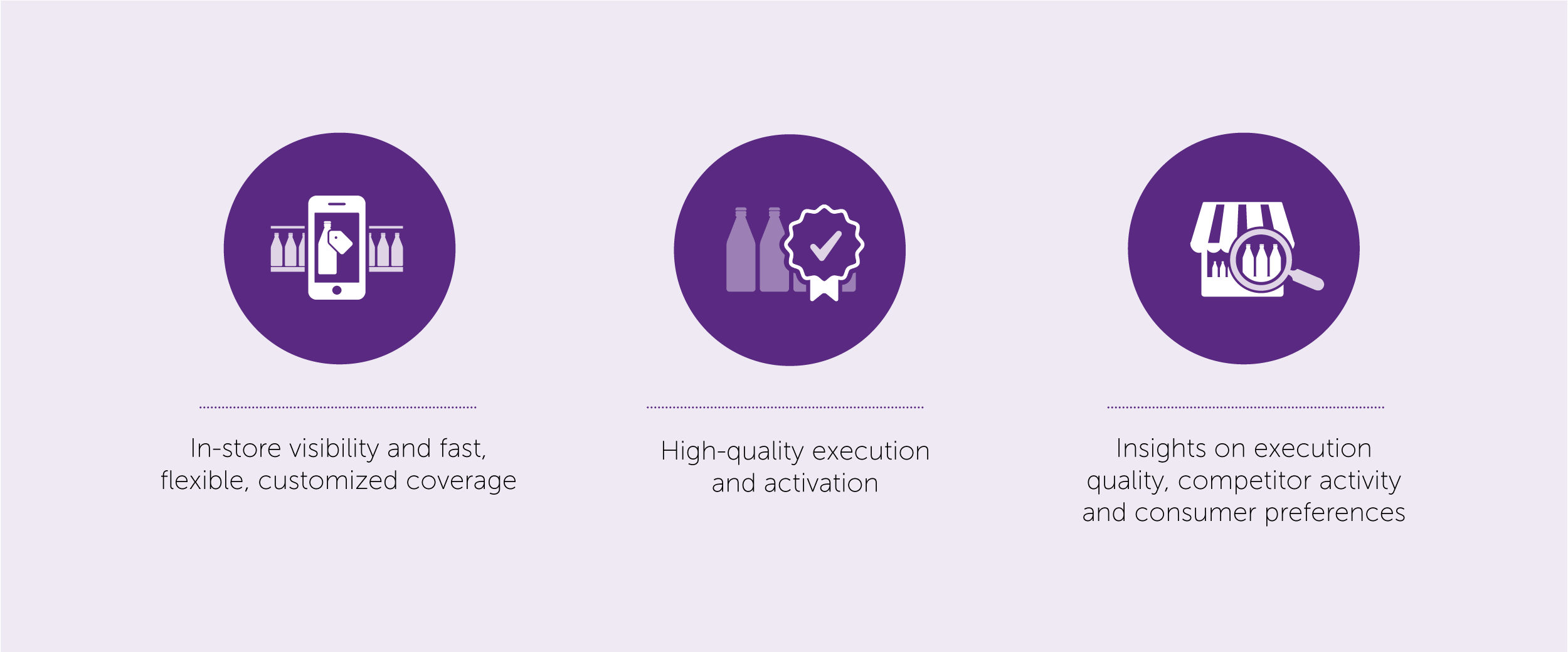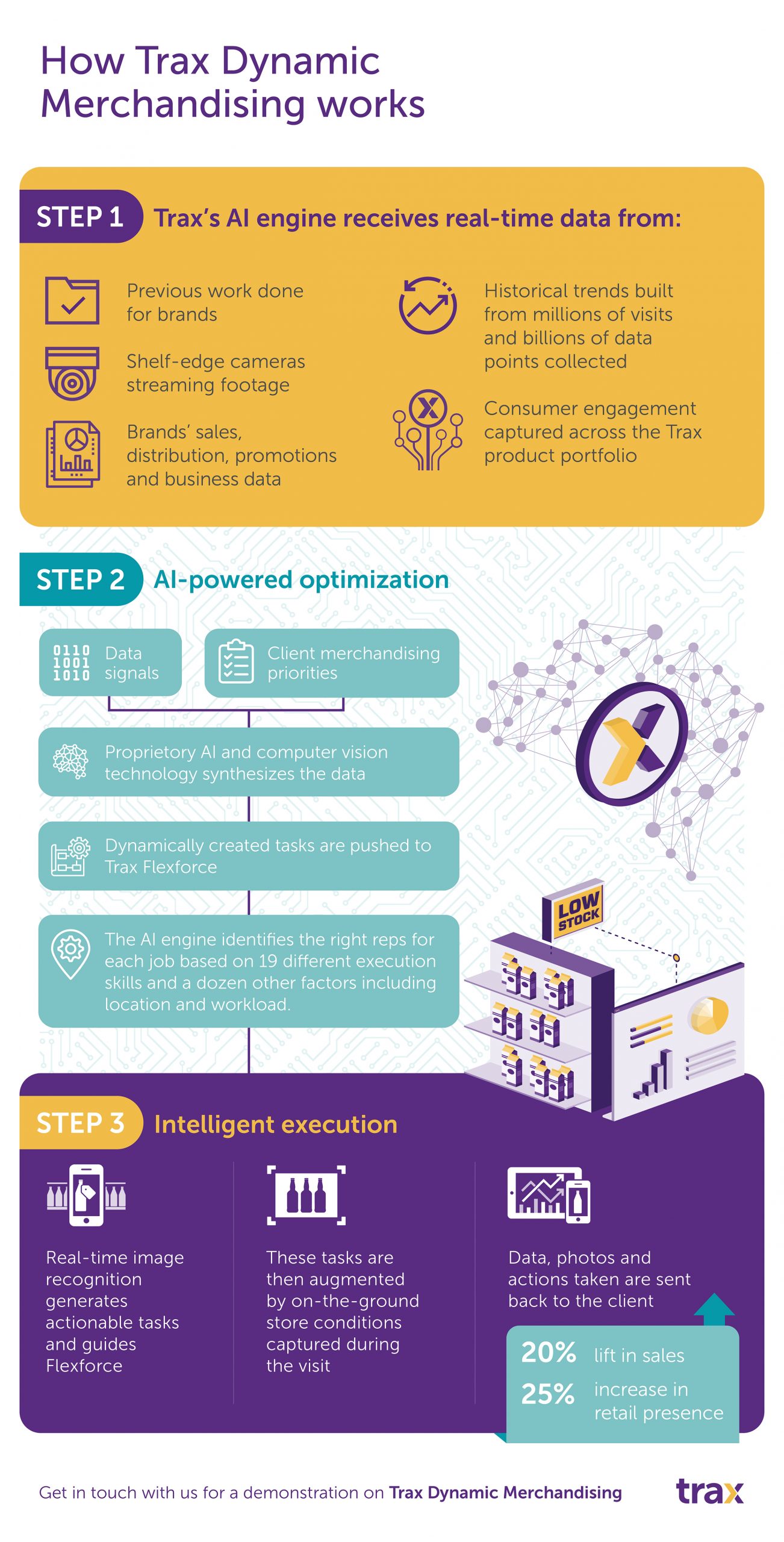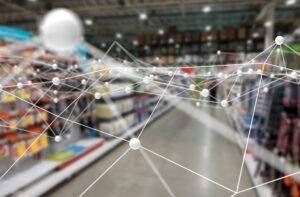The time has come for AI-driven on-demand merchandising
The COVID-19 pandemic has reset retail. With on-premise channels such as hotels, bars, restaurants, and airports suspending their operations or permanently shutting down, an estimated US$350 billion is moving to the grocery channel. In the quest to manage this monumental increase in volume, brands and retailers are re-examining traditional, often inflexible, models of merchandising and retail execution.
A 2018 research suggested that 24 percent of Amazon’s revenue comes from customers who experienced out-of-stock at their local retailer. This number has assuredly risen this year, thanks to the COVID-19 pandemic.
The reasons are manifold:
Shopper behavior has changed
Consumer demand has surged in some categories such as toilet paper and cleaning supplies, coffee and frozen meals, but dipped significantly in other categories seen as non-essential, such as sparkling wine and make-up. Bulk purchases have increased, and the movement of goods on shelves is so rapid and unpredictable that data on out-of-stock items or share-of-shelf is obsolete far too quickly.
‘BOPIS’ – boon for the shopper, bane for the grocer?
Social distancing has encouraged more online shopping, and to tackle the Amazon threat, grocers have boosted their omnichannel capabilities. However, the click-and-collect feature sometimes depletes shelves further and takes up staff time, leaving voids and gaps unresolved.
Companies are facing workforce disruption
Workforce disruptions have created significant complications in store. Distributors are dropping products at the door, and store labor is adjusted to accommodate shelf pack-out. The task of keeping products on the shelf is more of a priority than ever, yet getting boots on the ground has never been more challenging.
This gap in labor is directly leading to gaps in actionable data, poor in-store execution and loss of revenue.
Brands need fast, flexible solutions, BUT
Trax’s recent whitepaper The new imperative at shelf for consumer product companies drawing from a comprehensive customer survey highlights immediate actions for Consumer Goods companies.
Brands need fast, flexible solutions, delivering high-quality targeted execution in-store and generating real-time information to make smarter decisions. The holy grail includes:
- In-store visibility and fast, flexible, customized coverage
- High-quality execution and activation
- Insights on execution quality, competitor activity and consumer preferences

But traditional merchandising solutions can’t cope with the new reality.
The traditional agency model allows brands to rent a sliver of in-store time from the agency’s schedule; however, the best available time slot at the agency level may not always match the brand’s needs. Furthermore, the tasks scheduled for a visit may no longer be the most critical by the time these tasks are carried out.
The result is a gap between brands’ in-store needs and tasks agencies can execute during a scheduled visit.
Why the traditional agency model is inadequate for current times
- Capacity vs demand: agencies are slow to execute, and rapidly scaling up or down is expensive.
- Inflexible: store visits are route-driven and structured toward reducing agencies’ costs rather than solving customers’ most pressing issues.
- Inability to scale: additional merchandisers cannot be quickly brought to bear in dynamic situations such as product launches, promotions, new banners, and changes to the competitive landscape.
- Coverage challenge: there is always a tradeoff between the high cost of covering smaller or rural stores and the consequences of not covering them at all.
- Hidden costs: brands face additional costs for supervision at the store, IT, hiring and training costs, support, and so on.
Imagine a service which uses real-time data signals to select the right retail representative for each merchandising job, sends them to the right store at the right time, and tells them precisely which actions to take while in store, thus maximizing the ROI of every visit.
You’ve just imagined Trax Dynamic Merchandising, our full-service merchandising solution driven by AI.
How Trax Dynamic Merchandising works
Dynamic Merchandising is powered by Trax Flexforce, a skilled on-demand workforce that provides local coverage of 99.2 percent of all US retail outlets. The platform combines this nimble workforce with the power of our computer vision and machine learning platforms to address the most urgent store issues, from audit and restocking to display builds and activation at the store level.
- Continuous data signals: Using data from previous store visits as well as sales, inventory and distribution data and combining that with proprietary signals on real-time store conditions, the platform identifies the best time to visit a store.
- Dynamic scheduling: These data signals translate to prescriptive execution tasks based on each brand’s merchandising priorities. These tasks are allocated to the right sales rep, based on performance, experience and workload.
- Intelligent execution: Real-time image recognition identifies additional optimization tasks based on current in-store conditions and guides the Flexforce work throughout the visit. A photo taken of the activity serves both as evidence of tasks completed as well as training data for our Computer Vision platform.

Brands can use Trax Dynamic Merchandising in various ways, depending on the issues they face. If their field force can’t reach every store, the solution can cover the gaps. Suppose reps are spending too much time on tasks such as collecting data and repacking shelves. In that case, Trax Dynamic Merchandising can free them up to deal with higher-value activities such as relationship building, joint planning or fair-share negotiations. If the problem is dealing with spikes in an activity such as new product introductions or promotional campaigns, Trax Dynamic Merchandising is available on demand.
Get in touch with us for a demonstration on how Trax’s AI-driven Merchandising can help drive up to 20 percent lift in sales and 25 percent increase in retail presence by doing the right work, at the right store, at the right time.



